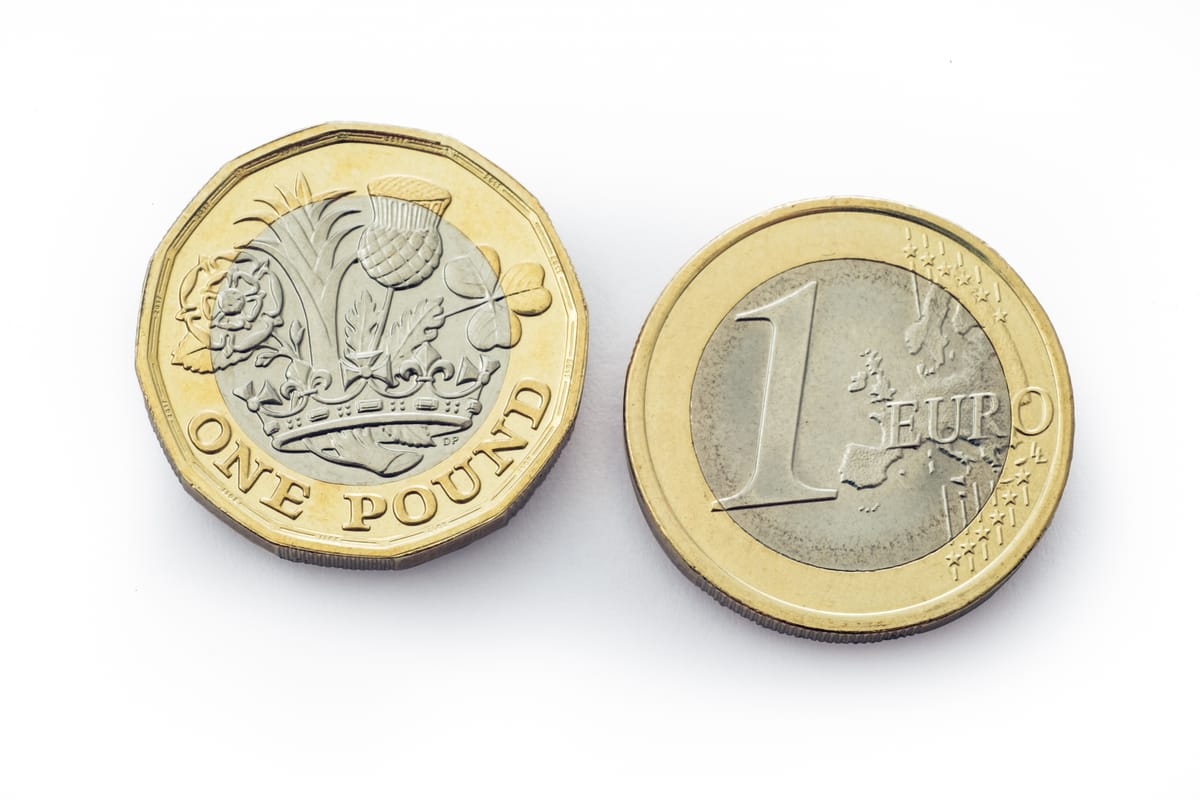GBP/EUR exchange rate week review: pound falls against euro following cooler-than-expected UK inflation
20/10/2025 to 24/10/2025: The pound slipped against the as softer-than-expected UK inflation data reignited bets on a Bank of England rate cut.

Monday
The pound euro (GBP/EUR) exchange rate traded sideways through the bottom of the 1.15 range amid a lack of UK economic data. However, the risk-sensitive pound swerved heavy losses thanks to a generally upbeat market mood.
The euro held steady after German producer price data showed factory gate prices fell 1.7% last month, easing less than the expected 1.9% drop and marking a slower pace of deflation than August’s 2.2% decline.
Tuesday
The pound climbed slightly against the euro as markets digested mixed UK government borrowing data. While public borrowing rose in September, the Office for Budget Responsibility (OBR) reported that higher-than-anticipated tax revenues have alleviated fiscal pressures. Therefore, it’s expected that borrowing will decrease during the latter part of the year.
The euro was undermined by its negative correlation with a strengthening dollar, as a quiet Eurozone data calendar left it devoid of support.
Wednesday
The pound dropped sharply into the 1.14 range versus the euro after the UK inflation print for September undershot expectations, raising investor bets on a BoE rate cut before the end of the year. Headline inflation remained at 3.8% for a third straight month, rather than edging up to 4% as expected.
The euro was rudderless as an ongoing absence of influential Eurozone economic data restricted support, exposing the single currency to dollar strength.
Thursday
The pound continued to feel the pressure of weaker-than-expected inflation figures that indicated price growth has peaked below BoE forecasts.
The euro recovered from an initial slip following the release of the Eurozone’s consumer confidence figures for October, which showed sentiment in the bloc improving to its highest level since February.
Friday
The pound was muted against the euro as encouraging UK data helped it steady following the inflation-driven wobble.
UK retail sales rose to their highest level in three years in a surprise to economists. The amounts purchased in shops rose 0.5% in September, well above the 0.2% contraction forecast. It represented the fourth consecutive monthly uptick, bringing volumes to their highest level since July 2022.
UK PMIs rose in October as manufacturing and services showed signs of recovery. The S&P Global Flash UK Services PMI increased to 51.1 from 50.8 in September and was broadly in line with market expectations of 51. The manufacturing PMI in the UK rose to 49.60 from 46.20 in September – but remained below the 50 threshold that separates contraction from expansion.
Eurozone business activity unexpectedly expanded at a faster pace in October as firms received new orders at the quickest rate in two and a half years, indicating the bloc's economy gained momentum at the start of the fourth quarter. The HCOB Flash Eurozone Composite PMI, compiled by S&P Global, rose to 52.2 in October from 51.2 in September.
The pound euro exchange rate ended the week at around 1.144.
Looking ahead
The European Central Bank (ECB) announces its next interest rate decision on Thursday, when it’s widely expected to hold borrowing costs unchanged at 2% – a hawkish move that could support the euro.
An economic data lull in the UK will leave the pound exposed to broader market forces, such as fiscal concerns ahead of the autumn budget.
